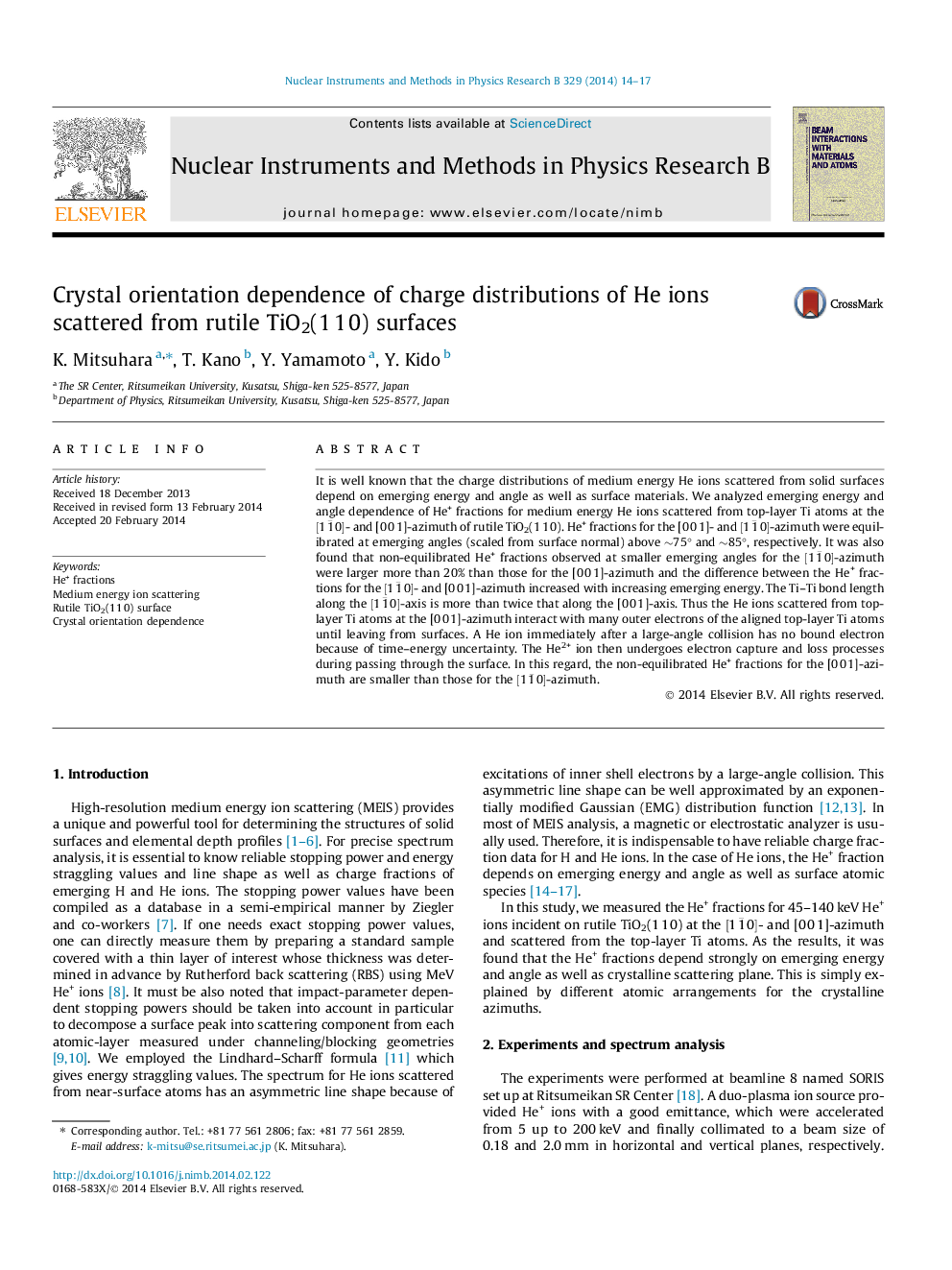| Article ID | Journal | Published Year | Pages | File Type |
|---|---|---|---|---|
| 8041809 | Nuclear Instruments and Methods in Physics Research Section B: Beam Interactions with Materials and Atoms | 2014 | 4 Pages |
Abstract
It is well known that the charge distributions of medium energy He ions scattered from solid surfaces depend on emerging energy and angle as well as surface materials. We analyzed emerging energy and angle dependence of He+ fractions for medium energy He ions scattered from top-layer Ti atoms at the [11¯0]- and [0 0 1]-azimuth of rutile TiO2(1 1 0). He+ fractions for the [0 0 1]- and [11¯0]-azimuth were equilibrated at emerging angles (scaled from surface normal) above â¼75° and â¼85°, respectively. It was also found that non-equilibrated He+ fractions observed at smaller emerging angles for the [11¯0]-azimuth were larger more than 20% than those for the [0 0 1]-azimuth and the difference between the He+ fractions for the [11¯0]- and [0 0 1]-azimuth increased with increasing emerging energy. The Ti-Ti bond length along the [11¯0]-axis is more than twice that along the [0 0 1]-axis. Thus the He ions scattered from top-layer Ti atoms at the [0 0 1]-azimuth interact with many outer electrons of the aligned top-layer Ti atoms until leaving from surfaces. A He ion immediately after a large-angle collision has no bound electron because of time-energy uncertainty. The He2+ ion then undergoes electron capture and loss processes during passing through the surface. In this regard, the non-equilibrated He+ fractions for the [0 0 1]-azimuth are smaller than those for the [11¯0]-azimuth.
Keywords
Related Topics
Physical Sciences and Engineering
Materials Science
Surfaces, Coatings and Films
Authors
K. Mitsuhara, T. Kano, Y. Yamamoto, Y. Kido,
